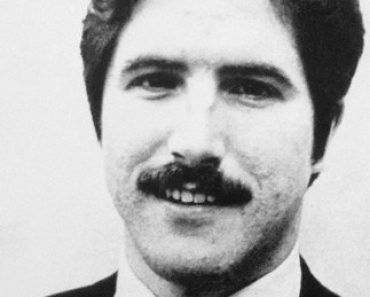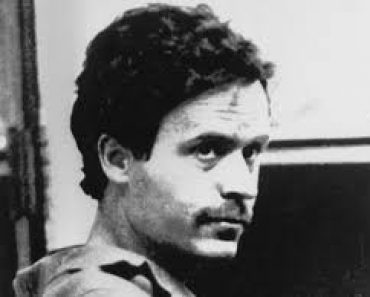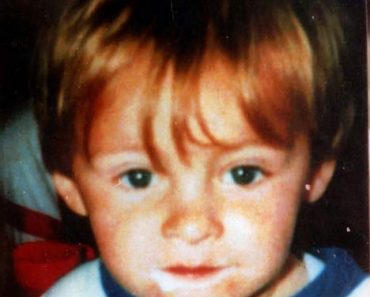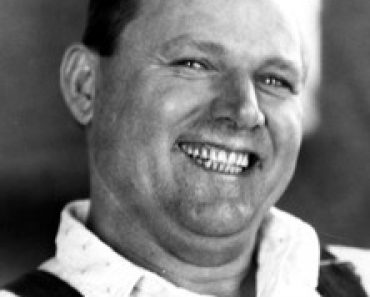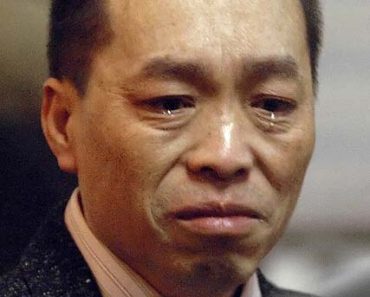 The Bath School Disaster was a series of bombings in Bath Township, Michigan, USA, on May 18, 1927, which killed 45 people and injured 58 others. Most of the victims were children in second to sixth grades attending the Bath Consolidated School. The bombings comprised the deadliest act of mass murder in a school in U.S. history, claiming more than three times as many victims as the Columbine High School massacre.
The Bath School Disaster was a series of bombings in Bath Township, Michigan, USA, on May 18, 1927, which killed 45 people and injured 58 others. Most of the victims were children in second to sixth grades attending the Bath Consolidated School. The bombings comprised the deadliest act of mass murder in a school in U.S. history, claiming more than three times as many victims as the Columbine High School massacre.
The perpetrator was school board member, Andrew Philip Kehoe, who was upset by a property tax that had been levied to fund the construction of the school building. He blamed the additional tax for financial hardships which led to foreclosure proceedings against his farm. These events apparently provoked Kehoe to plan his attack.
Murder One
On the morning of May 18th, Andrew Philip Kehoe first killed his wife and then set his farm buildings on fire. As fire fighters arrived at the farm, an explosion rocked the north wing of the school building, killing many of the people inside. Kehoe used a detonator to ignite dynamite and hundreds of pounds of Pyrotol, which he had secretly planted inside the school over the course of many months.
As rescuers started gathering at the school, Kehoe drove up, stopped, and detonated a bomb inside his shrapnel-filled vehicle, killing himself and the school superintendent and killing and injuring several others. During the rescue efforts, searchers discovered an additional 500 pounds of un-exploded dynamite and Pyrotol planted throughout the basement of the school’s south wing.
The Background
 Bath Township is a small community located ten miles northeast of Lansing, Michigan, and contains the unincorporated village of Bath. In the early 1920’s, the area was primarily agricultural. In 1922 Bath voters voted to form a district for the purpose of funding and constructing a consolidated school. There were 236 students enrolled when the school opened, ranging from the first to twelfth grades.
Bath Township is a small community located ten miles northeast of Lansing, Michigan, and contains the unincorporated village of Bath. In the early 1920’s, the area was primarily agricultural. In 1922 Bath voters voted to form a district for the purpose of funding and constructing a consolidated school. There were 236 students enrolled when the school opened, ranging from the first to twelfth grades.
The early part of the 20th century saw the disappearance of many small one-room schools, where different grades shared the same classroom and teacher. Educators of the era believed that children would receive a better, and more complete, education if students could attend a single school at one location. The grades could be age-divided into classes, and the facilities could be of a higher quality. After years of debate, when Bath Township created the district, it raised property taxes to pay for the project. As a result, new taxes were imposed on landowners, including Andrew Philip Kehoe

Andrew Philip Kehoe and wife
Who was Andrew Philip Kehoe
Andrew Kehoe was born in Tecumseh, Michigan, on February 1, 1872, in a family of thirteen children. Kehoe’s mother died when he was young, and his father remarried. Reportedly, Kehoe often fought with his stepmother. When Andrew Philip Kehoe was fourteen, the family’s stove exploded as she was attempting to light it. The oil fueling the stove soaked her, and the flames set her on fire. Andrew watched his stepmother burn for a few minutes before dumping a bucket of water on her. She later died from the injuries. The stove malfunction was left unresolved, and young Kehoe was not charged.
Andrew Philip Kehoe attended Tecumseh High School and Michigan State College, where he met his wife, Ellen “Nellie” Price, daughter of a wealthy Lansing family. Married in 1912, they moved around until 1919, when the couple bought a 185-acre farm outside the village of Bath from Nellie’s aunt for $12,000, paying $6,000 in cash and taking out a $6,000 mortgage.
Kehoe was regarded by his neighbors as an intelligent man who grew impatient with those who disagreed with him. Neighbors recalled that Andrew Philip Kehoe was always neat, dressed meticulously, and was known to change his shirt at midday, or whenever it became even slightly dirty. Neighbors also recounted how Kehoe was cruel to his farm animals, having once beat a horse to death.
Not Necessarily A Good Farmer
Kehoe’s neighbors were not impressed by the level of his farming ability. As neighbor M.J. “Monty” Ellsworth wrote, “He never farmed it as other farmers do and he tried to do everything with his tractor. He was in the height of his glory when fixing machinery or tinkering. He was always trying new methods in his work, for instance, hitching two mowers behind his tractor. This method at different times did not work and he would just leave the hay standing. He also put four sections of drag and two rollers at once behind his tractor. He spent so much time tinkering that he didn’t prosper.”
With a reputation for thriftiness, Andrew Philip Kehoe was elected treasurer of the Bath Consolidated School board in 1924. While on the board, Kehoe fought endlessly for lower taxes. He blamed the previous property tax levy for his family’s poor financial condition, and repeatedly accused superintendent Emory Huyck of financial mismanagement.
While still on the school board, Andrew was appointed the Bath Township Clerk in 1925, but was unsuccessful at retaining this position in the election later that year. During this time Nellie Kehoe was chronically ill with tuberculosis, and her frequent hospital stays may have played a role in putting the family into debt. At the time of the bombing, Kehoe had ceased making mortgage and homeowner’s insurance payments, and the mortgage lender had begun foreclosure proceedings against the farm.
The Planting of Explosives
There is no clear indication as to when Andrew Philip Kehoe conceived and planned the steps leading to the ultimate, deadly events. A subsequent investigation concluded that, based upon the activity at the school and the purchases of explosives, his plan had likely been underway for at least a year.
In the winter of 1926, the board asked Kehoe to perform maintenance inside the school building. Regarded by most as a talented handyman, he was known to be familiar with electrical equipment. As a board member appointed to conduct repairs, he had free access to the building and his presence was never questioned.
Beginning in the summer of 1926, Andrew Philip Kehoe purchased over a ton of Pyrotol, an incendiary introduced in World War I. Farmers during the era used the substance for excavation. In November 1926, Kehoe drove to Lansing and purchased two boxes of dynamite at a sporting goods store.
Dynamite was also commonly used on farms, and Kehoe’s purchases of small amounts of dynamite and Pyrotol at different stores and on different dates did not raise any suspicions. Neighbors reported hearing explosions set off on the farm, as well as recalling conversations where Kehoe explained he was using dynamite for tree stump removal.
The Day of Disaster
There were a few warning signs prior to the events. Andrew Philip Kehoe passed out employee paychecks the prior week and told bus driver Warden Keyes, “My boy, you want to take good care of that check as it is probably the last check you will ever get.” Teacher Bernice Sterling telephoned Kehoe two days before the blast and asked to use his grove for a class picnic. Kehoe told her that if she “wanted a picnic she would better have it at once.”
Prior to May 18th, Andrew Philip Kehoe had loaded the back seat of his car with metal debris. He threw in old tools, nails, pieces of rusted farm machinery, digging shovels, and anything else capable of producing shrapnel during an explosion. After the back seat was filled, Kehoe placed a large cache of dynamite behind the front seat and a loaded rifle on the passenger’s seat.
Let The Day Begin
Records at Lansing’s St. Lawrence Hospital reflected that Nellie Kehoe had been discharged on May 16th. Between her release and the bombing, two days later, Kehoe killed Nellie by what was later determined to be blunt force trauma to the head with some unknown heavy object. Her body was found in a wheelbarrow located in the rear of the farm’s chicken coop.
Piled around the cart were silverware, jewels and a metal cash box. Ashes of several bank notes could be seen through a slit in the cash box. Kehoe had completely wired the farm, and inside every building he inserted homemade Pyrotol firebombs. Farm animals were found tied up in their enclosures, apparently to ensure their cruel and senseless deaths in the subsequent fire.
At approximately 8:45 a.m., Andrew Philip Kehoe detonated the firebombs. The neighbors noticed the fire, and volunteer fire departments from all over the area began rushing to the scene. At 9:45 a.m. an explosion was heard from the school building. Rescuers heading to the scene of the Kehoe fire turned back and headed toward the school. Parents within the rural community also began rushing to the school.
Bath Explodes
 First-grade teacher, Bernice Sterling, recounted the explosion to an Associated Press reporter as being like a terrible earthquake. “It seemed as though the floor went up several feet,” she said. “After the first shock I thought for a moment I was blind. When it came the air seemed to be full of children and flying desks and books. Children were tossed high in the air; some were catapulted out of the building.”
First-grade teacher, Bernice Sterling, recounted the explosion to an Associated Press reporter as being like a terrible earthquake. “It seemed as though the floor went up several feet,” she said. “After the first shock I thought for a moment I was blind. When it came the air seemed to be full of children and flying desks and books. Children were tossed high in the air; some were catapulted out of the building.”
The north wing of the school had collapsed. Parts of the walls had crumbled, and the edge of the roof had fallen to the ground. Monty Ellsworth, a neighbor of the Kehoes recounted, “There was a pile of children of about five or six under the roof and some of them had arms sticking out, some had legs, and some just their heads sticking out. They were unrecognizable because they were covered with dust, plaster, and blood. There were not enough of us to move the roof.” Ellsworth volunteered to drive back to his farm and obtain the heavy rope from his slaughterhouse needed to pull the structure off the children’s bodies.
On the way back to his farm, Ellsworth reported seeing Andrew Philip Kehoe, in his car heading in the opposite direction toward the school. “He (Andrew) grinned and waved his hand. When he grinned, I could see both rows of his teeth,” said Ellsworth.
The Chaos
The scene at the school building was chaotic. One witness, Robert Gates, recounted how “mother after mother came running into the school yard, and demanded information about her child and, on seeing the lifeless form lying on the lawn, broke into sobs. In no time more than 100 men were at work tearing away the debris of the school, and nearly as many women were frantically pawing over the timber and broken bricks for traces of their children.”
 About a half hour after the explosion, Andrew Philip Kehoe drove up to the school and saw Superintendent Huyck. Kehoe summoned the superintendent over to his vehicle. According to one eyewitness, when Huyck drew close, Kehoe pulled out his rifle and fired into the back seat. Whether by gunshot or otherwise, the dynamite in the vehicle ignited and the resulting explosion killed Kehoe, the superintendent, Postmaster Glenn O. Smith, and Smith’s father-in-law Nelson McFarren, a retired farmer. Cleo Claton, an eight-year-old second grader, had wandered out of the collapsed school building and was killed by the shrapnel from the exploding vehicle. Several others were injured as the shrapnel flew through the crowd.
About a half hour after the explosion, Andrew Philip Kehoe drove up to the school and saw Superintendent Huyck. Kehoe summoned the superintendent over to his vehicle. According to one eyewitness, when Huyck drew close, Kehoe pulled out his rifle and fired into the back seat. Whether by gunshot or otherwise, the dynamite in the vehicle ignited and the resulting explosion killed Kehoe, the superintendent, Postmaster Glenn O. Smith, and Smith’s father-in-law Nelson McFarren, a retired farmer. Cleo Claton, an eight-year-old second grader, had wandered out of the collapsed school building and was killed by the shrapnel from the exploding vehicle. Several others were injured as the shrapnel flew through the crowd.
After Kehoe’s car exploded, Ellsworth recounted that “I saw one mother, Mrs. Eugene Hart, sitting on the bank a short distance from the school with a little dead girl on each side of her and holding a little boy, Percy, who died a short time after they got him to the hospital. This was about the time Kehoe blew his car up in the street, severely wounding Perry, the oldest child of Mr. and Mrs. Hart.”
A Community Effort
O.H. Buck, foreman of the road crew, recalled the scene after the final explosion: “I began to feel as though the world was coming to an end. I guess I was a bit hazy. Anyway, the next thing I remember I was out on the street. One of our men was binding up the wounds of Glenn Smith, the postmaster. His leg had been blown off. I went back to the building and helped with the rescue work until we were ordered to stop while a search was made for dynamite.”
Telephone operators stayed at their stations for hours to summon doctors, undertakers, area hospitals and anyone else who might help. The Lansing Fire Department sent three men and the city’s chemical truck.
The local physician was Dr. J.A. Crum. He and his wife, a nurse, had both served in World War I, and they had returned to Bath to open a pharmacy. After the explosion the Crums turned their drugstore into a triage center. The dead were removed to the town hall, now converted into a morgue. Private citizens were enlisted to use their automobiles as additional ambulances to take survivors and family members to area hospitals. By the afternoon some 13 ambulances were at the township hall to transport the dead to undertakers.
 Searching For The Children
Searching For The Children
Hundreds of people worked in the wreckage all day in an effort to find and rescue the children pinned underneath. Area contractors had sent all their men to assist, and many ordinary people came to the scene in response to the pleas for help. Eventually, 34 firefighters and the Chief of the Lansing Fire Department arrived on the scene, as did several Michigan State Police officers, who managed traffic to and from the scene.
The injured and dying were transported to Sparrow Hospital and St. Lawrence Hospital in Lansing. The construction of the latter facility had been financed in large part by Lawrence Price, Nellie Kehoe’s uncle and formerly an executive in charge of Oldsmobile’s Lansing Car Assembly.
Michigan Governor Fred Green arrived during the afternoon of the disaster and assisted in the relief work, carting bricks away from the scene. The Lawrence Baking Company of Lansing sent a truck filled with pies and sandwiches, which were served to rescuers in the township’s community hall.
The bombing had destroyed the north wing of the school. During the search rescuers found an additional 500 pounds of dynamite Andrew Philip Kehoe had placed in the south wing, which had failed to detonate. The search was halted to allow the Michigan State Police to disarm the devices. After this was completed and a sweep of the building made, the recovery efforts recommenced.
More Bombs
In the south wing, the State Police found un-exploded materials along with an alarm clock timed to go off at 9:45 a.m., the same time as the explosion went off in the north wing. The reason why these explosives failed to detonate could never be conclusively determined. Investigators speculated that the initial explosion may have caused a short circuit in the second set of bombs.
 Police and fire officials also gathered at the Kehoe farm to investigate the fires. It was not until the following day, May 19th, that investigators identified Nellie Kehoe’s charred body among the ruins of the farm. The body was so disfigured it went unnoticed by hundreds who walked past it the previous day.
Police and fire officials also gathered at the Kehoe farm to investigate the fires. It was not until the following day, May 19th, that investigators identified Nellie Kehoe’s charred body among the ruins of the farm. The body was so disfigured it went unnoticed by hundreds who walked past it the previous day.
All the Kehoe farm buildings were destroyed, and the animals trapped inside the barn had perished. Ironically, the amount of unused equipment and materials on the farm could have easily paid off the Kehoes’ mortgage. Investigators found a wooden sign wired to the farm’s fence with Andrew Philip Kehoe’s last message. It read “Criminals are made, not born.”
The Aftermath
The American Red Cross, setting up operations at the Crum drugstore, took the lead in providing aid and comfort to the victims. The Lansing Red Cross headquarters were kept open until 11:30 that night to answer telephone calls, update the list of dead and injured and provide information and planning services for the following day.
The Red Cross also managed donations sent to pay for both the medical expenses of the survivors and the burial costs of the deceased. In a few short weeks, $5,284.15 was raised through donations, including $2,500 from the Clinton County board of supervisors and $2,000 from the Michigan legislature. Unlike the Columbine High School massacre, there was no legislative response, either by the state or federal governments, aimed at preventing a recurrence, although Pyrotol was quietly taken off the market.
Over the next few days there were multiple funerals, with the most, eighteen, held on Saturday, May 22nd. The disaster had made the front pages of national newspapers.
Vehicles from outlying areas and surrounding states descended upon Bath by the thousands. Over 100,000 vehicles passed through on Saturday alone, an enormous amount of traffic for the area. Some Bath citizens regarded this armada as an unwarranted intrusion into their time of grief, but most accepted it as a show of sympathy and support from surrounding communities.
The Coroner’s Inquest
The coroner arrived at the scene on the day of the disaster and swore in six community leaders to serve as an investigative jury. A coroner’s inquest into the matter was held the following week. Dozens of Bath citizens and law enforcement personnel testified before the jury, and the Clinton County Prosecutor conducted the examination. Although there was never any doubt that Andrew Philip Kehoe was the perpetrator, the jury was asked to determine if the school board or its employees were guilty of criminal negligence.
Kehoe’s neighbor, Sidney J. Howell, testified that after the fire began, Kehoe warned him and three boys to leave the farm, telling them, “Boys, you’re my friends. You’d better get out of here and go to the school house.” Three telephone linemen working near Bath testified that after first going to the farm and then to the school, Kehoe passed them en route, and they saw him reach the school right before them. Kehoe’s car swerved to the right and stopped in front of the building.
In the next instant, according to the linemen, the car blew up, and one of them was struck by shrapnel. This testimony contradicted statements from others that Andrew Philip Kehoe paused after stopping and called Superintendent Huyck over before blowing up the vehicle.
The Verdict
After more than a week of testimony, the jury exonerated the school board and its employees. In its verdict the jury concluded that Andrew Philip Kehoe “conducted himself sanely and so concealed his operations that there was no cause to suspicion any of his actions. We further find that the school board, and Frank Smith, janitor of the school building, were not negligent in and about their duties, and were not guilty of any negligence in not discovering Kehoe’s plan.”
The inquest determined that Andrew Philip Kehoe murdered Superintendent Emory Huyck on the morning of May 18th. It was also the jury’s verdict that the school was blown up as part of a plan and that Kehoe alone, without the aid of conspirators, murdered 43 people in total, including his wife Nellie. Suicide was adjudicated to be the cause of Andrew Kehoe’s death.
Kehoe’s body was eventually claimed by his sister. Without ceremony, he was buried in an unmarked grave in an initially unnamed cemetery. Later, it was revealed that Andrew Kehoe was buried in the paupers’ section of Mt. Rest Cemetery, St. Johns, in Clinton County. Nellie Kehoe was buried in Mount Hope Cemetery in Lansing by her family under her maiden name of Price.
On August 22, some three months after the bombing, fourth-grader Beatrice Gibbs died following hip surgery. She was counted as the 45th and final death directly attributable to the Bath School Disaster.
credit murderpedia







